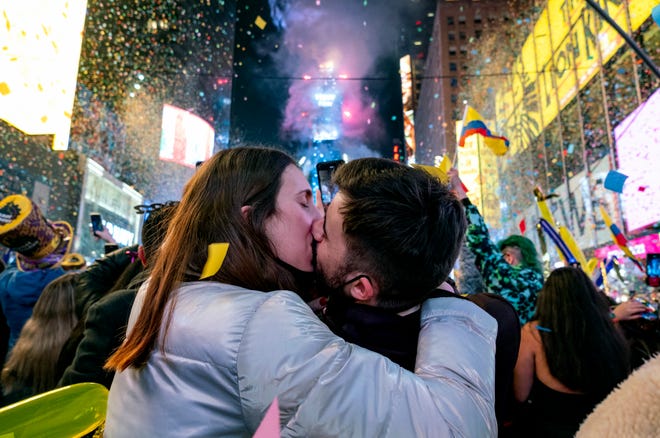The countdown to the New Year practically begins when the previous one ends. On January 1 of every year, people ring in the New Year with resolutions to change and parties filled with good times.
But why do we celebrate New Year’s and how did the holiday originate? Its current state of champagne toasts and midnight kisses has not always been how New Year’s was celebrated.
So, here is what you need to know about New Year’s 2023, plus getting to know more about its origins, traditions and celebrations.
USA TODAY Gift Guide: No matter how you holiday, make it iconic. Shop the USA TODAY holiday gift collection.
Just Curious: We’re here to answer life’s everyday questions
When is New Years 2023?
New Year’s Day is Sunday, Jan. 1, 2023. Since it falls on a Sunday, the public holiday of New Year’s is Monday, Jan. 2, 2023.

Why do we kiss underneath a parasite?The origins of mistletoe explained
When is New Year’s Eve?
New Year’s Eve is Saturday, Dec. 31, 2022.
Why does the new year begin on January 1?
New Year’s festivities date back thousands of years to ancient Babylon, where the first new moon after the vernal equinox signified the start of a new year. The festival of “Akitu” lasted for 11 days with a different ritual on each.
The Roman calendar followed a similar format with its new year occurring at the vernal equinox, having 10 months and 304 days in a year, according to History.com. The months of Januarius and Februarius were later added thank to to king Numa Pompilius.
In 46 B.C., emperor Julius Caesar introduced a new Julian calendar which instituted January 1 as the start of the new year, taking the namesake of Janus, the Roman god of beginnings. Roman celebrations for New Year’s included exchanging gifts, giving offerings to Janus, decorating homes with laurel branches and attending parties.
The date of New Year’s changed for several years as Christian leaders in Europe moved the first of the year to December 25 and March 25, according to Britannica. When the Gregorian calendar was made in 1582 by the Catholic Church, Pope Gregory XIII reestablished January 1 as New Year’s Day.
However, many cultures and religions celebrate their New Year’s on other days. For example, in the Jewish religious calendar, the new year is marked on Rosh Hashanah which occurs between September and October depending on the year. Chinese New Year, also called Lunar New Year, is a celebrated for a month usually beginning in late January or early February.

A giant acorn, a big potato, bologna: Cities get creative with their New Year’s Eve ‘drops’
Your New Year’s Eve guide:Dolly Parton, Miley Cyrus, Ryan Seacrest and more!
New Year’s celebrations, traditions explained
Modern New Year’s celebrations often begin New Year’s Eve on December 31. In the U.S., the tradition of the Times Square ball drop counts down to midnight, or the official start of the new year on January 1.
The first New Year’s Eve ball drop took place in 1907 with the first incarnation made of iron and wood, measuring 5 feet in diameter and weighing 700 pounds, and was decorated with 100 light bulbs. The current ball is 12 feet in diameter and weighs almost 12,000 pounds, according to the official Times Square website.
Making New Year’s resolutions has been a tradition for centuries. It dates back to ancient Babylonians making promises to the gods in order to start the year off right. Today, people still make promises, but instead to themselves, generally pledging to quit habits, get in shape or learn a new skill.
Other ways people ring in the New Year include partying with loved ones, watching fireworks, toasting champagne, singing songs like “Auld Lang Syne” or sharing a New Year’s kiss at midnight.

‘Auld Lang Syne’: Explaining the New Year’s Eve song
Why do we kiss on New Year’s Eve?The reasons behind the romantic moment